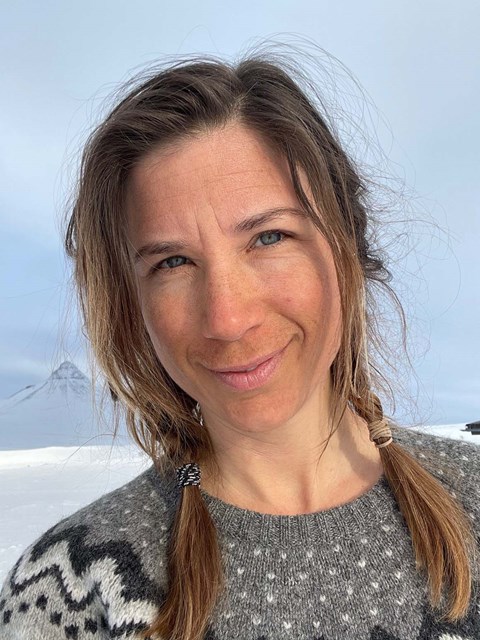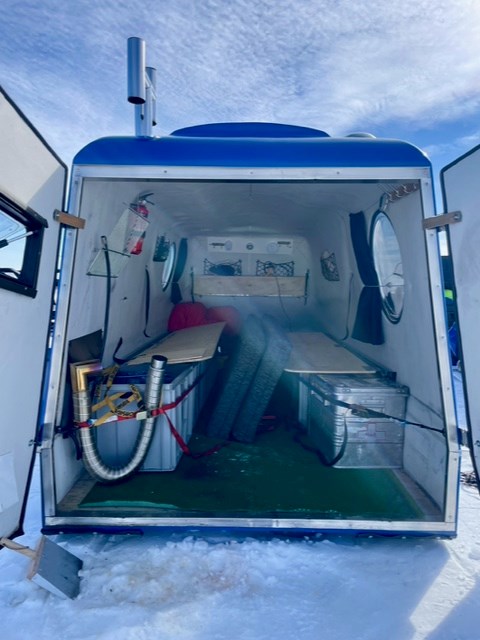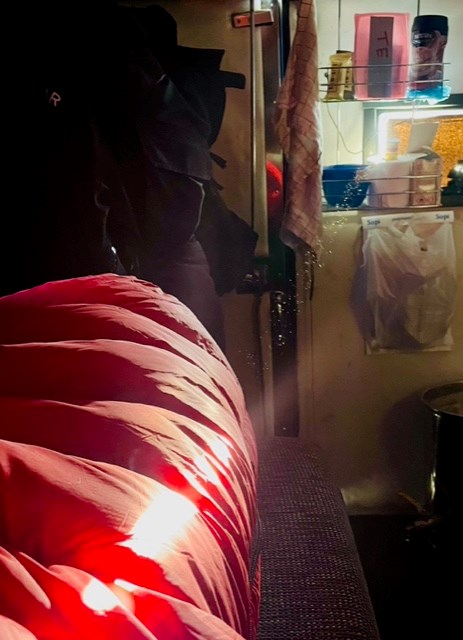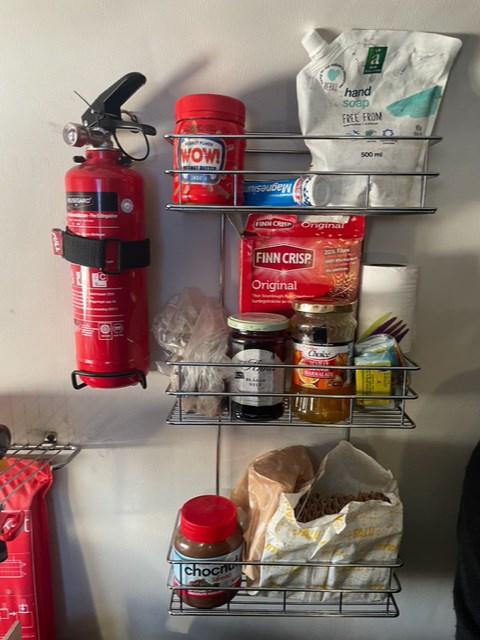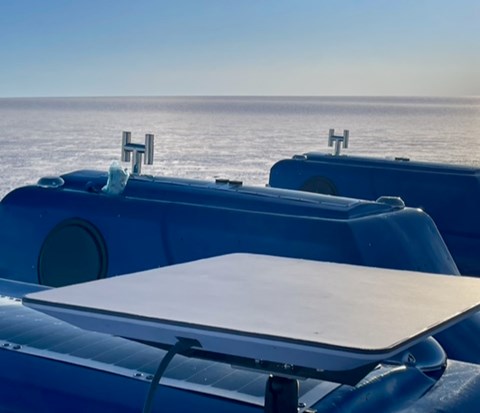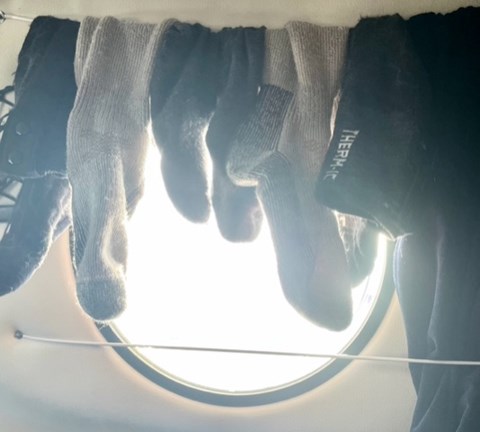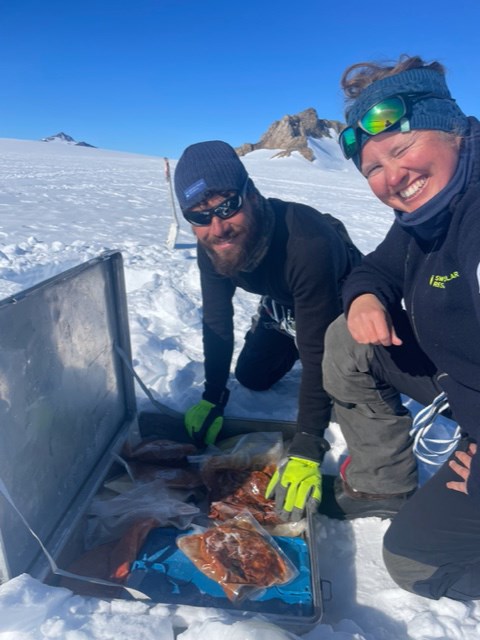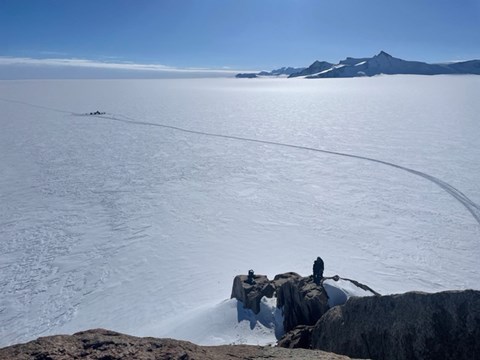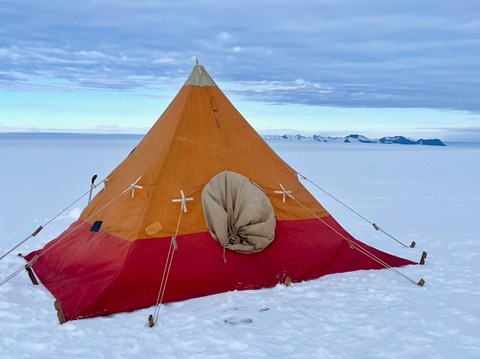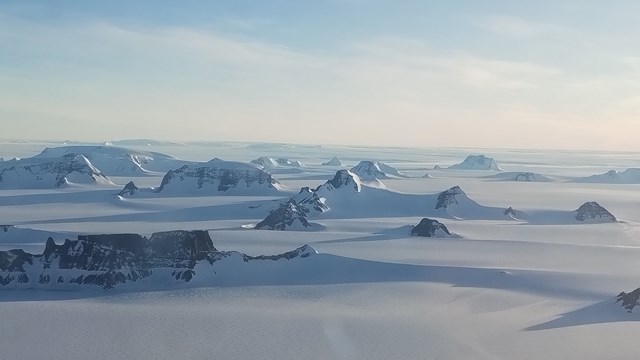Life during fieldwork
Text by: Karna Johansson, doctor at the DML 2023/24 expedition
The areas to be sampled are up to 200 km from Wasa, which is impossible to drive in one day. Therefore, we are six people who make two longer trips out in the field, of one and three weeks each, where we take with us what is required to be able to sleep and live during the fieldwork. Now, we are towards the second half of the more extended trip, and yesterday, we moved our camp from Vardeklettane (a lot of sun but also a lot of wind) towards Kibergbreen.
Accommodation and hygiene
The base of our camp consists of three so-called arks, small living modules that we transport using snowmobiles. Each ark can accommodate two people by showing consideration and gymnastic exercises. A small stove powered by aviation fuel or kerosene is used for heat and cooking. Along the long sides, there is quite a lot of space for storing things in trays, and in the evenings, we fold down two bunk beds with mattresses in the style of Donald Duck on Christmas Eve. Down sleeping bags keep us warm when the stove is turned off for the night. The resemblance to small boat life is striking, except it's cold instead of wet.
We also have a Scott tent, a beautiful fire-yellow tent of the same model that the polar explorer Scott lived in over a hundred years ago. This tent is used for toilet facilities. As a doctor, I am responsible for hygiene in the camp and try to ensure good opportunities to wash hands after visiting the toilet with wet wipes, warm water, soap and hand sanitiser - all as desired. However, I am a little worried that someone will get hurt when they enter through the round opening, where most people can step in unhindered if they are naked, not if they are wearing five layers of clothing.
Food
When energy is low, people quickly become frozen and irritable, and decisions are poorer, so food is essential. Our days start with breakfast in the arks, often a homemade porridge mixed with lots of fruit and nuts and a sandwich with peanut butter and jam. The lunch in the field is usually freeze-dried, supplemented with energy bars, dried fruit and a hot cup. The view makes up for the bland taste of freeze-dried food. Dinner has been prepared and vacuum-packed by our chef. We keep it frozen by burying it in boxes at each camp and heat it in boiling water on the stoves. We get water by melting snow, a time-consuming process that usually lasts as long as we are in the camp.
Freeze-dried coffee, despite all man's achievements, we still can't do well. So we call it schmaffe instead – that way, you won't be disappointed when it doesn't taste like coffee, but just happy that it looks like coffee! It takes a lot of schmaffe. As well as Swedish crispbread, biscuits and chocolate.
From one camp to another
When we finish sampling an area, we move our little camp; it takes an hour to tear down and get going and about the same time to set up. The snowmobiles that do not pull the arks pull sledges with fuel, food, research equipment, and a growing load of rock samples. Since the sampling went much better than expected, the load is also larger than expected, but it is a welcome inconvenience, and the biggest challenge seems to be getting it home to Sweden (and that is not our problem, after all).
Internet connection
"Home is where your phone connects to WiFi," as the old saying goes. We have an internet connection via Starlink mounted on one of the arks in the camp. Our latitudes are outside that covered by Starlink, whose satellites are centred around the equator. But it still works quite well most of the time, maybe because there isn't much obscuring the horizon. However, we are limited by the fact that the system is very energy-intensive. Each ark has solar cells on the roof that are enough to charge phones, GPS, radios and batteries for various equipment. But we have to ration the internet, which is quite nice. Then you get time to think and write and maybe get a blog post going so people back home get a picture of how we are doing. Somewhere, it should still feel like you're on an expedition.
We agree that, on the whole, we are incredibly comfortable to be so far away from everything called civilisation. As we gathered for dinner the other night, we debated whether it would be best to have a fixed or flip-up shelf at the front of the ark. And if the shelf placement is the biggest potential for improvement, apart from the lack of coffee and shower, then we don't have much to complain about.
